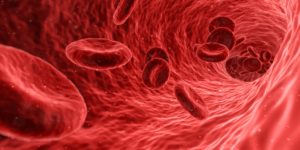 Pulmonary arterial hypertension is caused by abnormal changes in the pulmonary arteries of patients. These changes include increased thickness of the muscle layer of the pulmonary arteries and increased stiffness of the pulmonary arteries. Over the last 25 years, 14 medications have been approved to try and treat these changes. These medications have resulted in dramatic improvement in patient outcomes. Patients live longer and feel better. However, many patients continue to have significant disease despite treatment with up to three PAH medications together.
Pulmonary arterial hypertension is caused by abnormal changes in the pulmonary arteries of patients. These changes include increased thickness of the muscle layer of the pulmonary arteries and increased stiffness of the pulmonary arteries. Over the last 25 years, 14 medications have been approved to try and treat these changes. These medications have resulted in dramatic improvement in patient outcomes. Patients live longer and feel better. However, many patients continue to have significant disease despite treatment with up to three PAH medications together.
The pulmonary arteries are supplied by important nerves that run on the outside of the vessels near where the main pulmonary artery splits into left and right. In 2013, scientists showed that by using a special catheter that heated the inside of the pulmonary artery they were able to “cook” the nerve supply to the pulmonary arteries (denervate—damage the nerve). This led to immediate improvement in pulmonary artery pressure that was sustained at repeat measurement 3 months later. Improvements were also seen on echocardiography. Since the original report in 2013, several other reports and small studies have been published. A larger study in China is ongoing.
Why would intentional injury to the nerves around the pulmonary arteries be helpful for PAH? These nerves send signals to the pulmonary arteries that cause the vessels to squeeze. They also may release signals that promote the increased thickness and stiffness of the pulmonary arteries. The initial abnormality that starts the PAH disease process may begin inside the blood vessel but is it likely that the nervous system then amplifies the disease process through abnormal signaling.
Although pulmonary artery denervation is not ready for prime time, it is an exciting area of research. Stay tuned for more updates.
